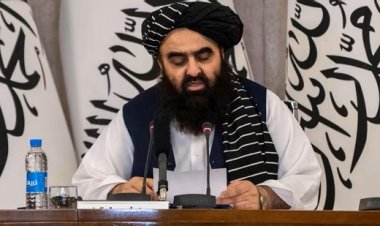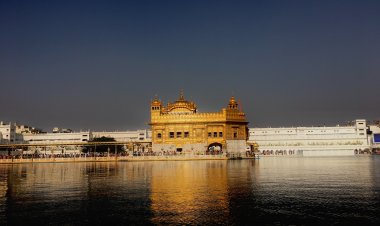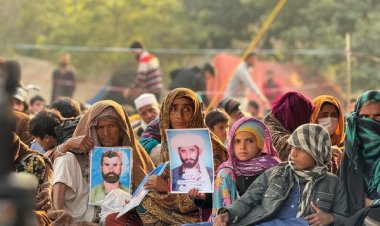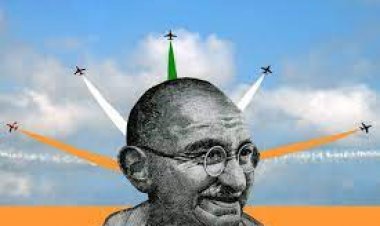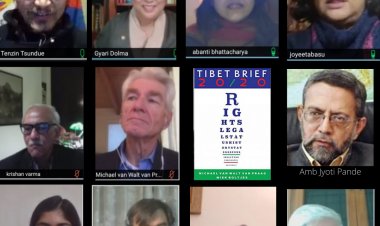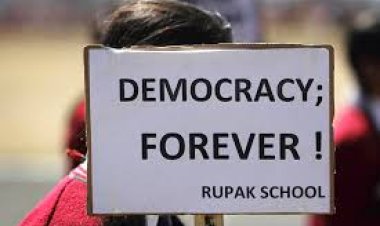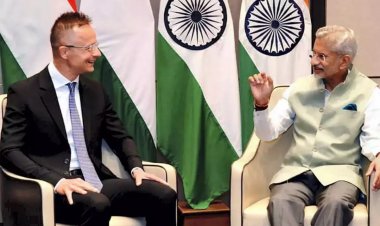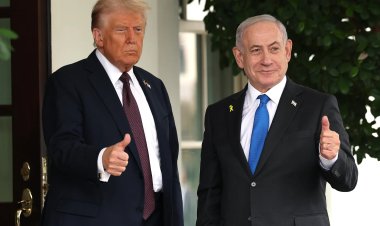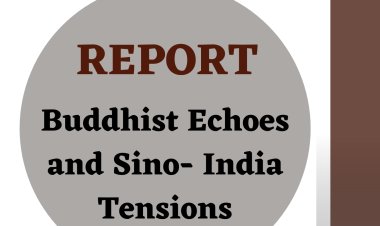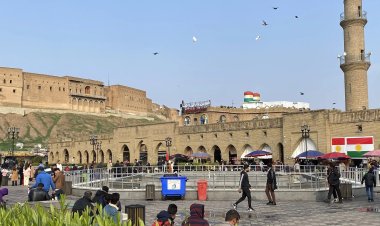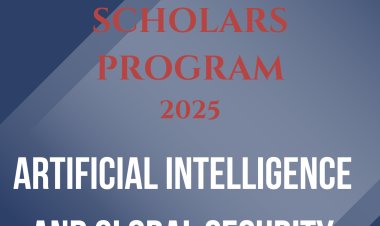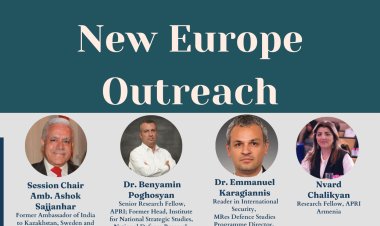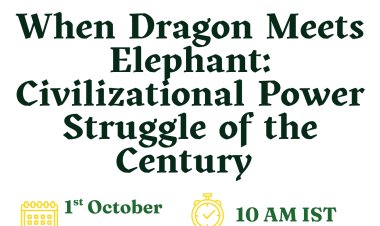Vasudhaiva Kutumbakam: A new theoretical framework to make sense of the world order
The author discusses Vasudhaiva Kutumbakam which is a kind of a revolution in the world of IR theories, as the idea of Vasudhaiva Kutumbakam is India’s grand entry into the world of international Relations theories.
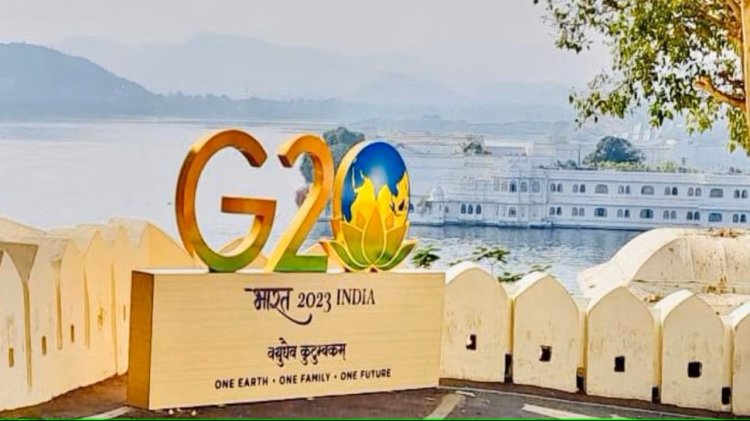
Analysis
By Abhinav Pandya
Recently, in the Y20 event at Baroda, organised by the Jyot Foundation and Khoj, His Holiness Spiritual Sovereign Shree Yug Bhushan Suri, a Shwetambar Jain monk and one of the finest minds on strategy and foreign policy in the current times, suggested the speakers share their thoughts on the “Ethics of Kutumb towards Achieving Vasudhaiva Kutumbakam”. Being invited as one of the speakers, I was initially quite perplexed and puzzled at the nature of the topic. For someone like me coming from a typical IR and national security background, the topic mentioned above was more like an ethical and spiritual precept, better suited for discussions on life management or any spiritual debate. However, after contemplating for a while, I realised that His Holiness had subtly thrown a revolutionary topic in his characteristic mystic style of an oriental monk. While exploring the ethics of a Kutumb (family) to achieve Vasudhaiva Kutumbakam (the world is one family), I discovered that it was a kind of a revolution in the world of IR theories, as the idea of Vasudhaiva Kutumbakam is India’s grand entry into the world of international Relations theories.
Domination of the West in IR theories
First and foremost, it must be mentioned that the theoretical frameworks in any discipline, be it sociology, psychology, history, Political science or international relations, constitute the fundamentals of the academic discourse of that subject. They are like the robust base or infrastructure on which the superstructure of knowledge is created. Going by this logic, IR theories play a crucial role in explaining the strategic and tactical phenomena in foreign policy and security. All the geopolitical phenomena, including conflicts, alliances, wars, insurgency, friendships, multilateral institutions, trade regimes, rules of engagement in global governance bodies, definitions, norms and standards in foreign policy discourse are sought to be explained by the theoretical frameworks of IR. Diplomats and academic experts across the geographies make sense of the geopolitical phenomena through these theories. Hence, these theoretical structures set the basic agenda, constituting the robust edifice of the academic, policy and media discourse on IR and security.
So far, the theoretical frameworks developed in the western world have been dominated the academic discourse in IR and security studies. Generations of diplomats and IR experts across the world have been trained in these theories as the basic structure of IR. They have shaped the geopolitical world through policies and decisions, and also defined it, setting the standards and norms, within the confines of the western theoretical frameworks. The prominent western IR theories are realism, liberalism, constructivism, feminism, Marxism, rational choice theory, structuralism, neo-liberalism, functionalism, etc. All these theories are the product of the Western historical experiences in politics, society, economy and statecraft.
The Western experiences are overwhelmingly dominated by conflict and struggles. The western historical phenomena include conflict between the slaves and slave owners, feudal lords and serfs, crusades between the Christians and Muslims, bitter rivalry between the Church and state, persecution of scientists by the Church, fight for the freedom of expression, liberty and equality, class struggle between the bourgeoisie and proletariat, wars between the nation states, middle-class revolutions against the monarchies and Marxist revolutions against the capitalist and bourgeoise state. Hence, the idea of chaos, anarchy and conflict forms the bedrock of Western historical experience. The eternal quest is to establish a rules-based world order is inherently contradictory to the above-mentioned primary traits of chaos and conflict.
However, these experiences are different from the way historical phenomena unfolded in the east. The west never witnessed the emergence of revolutionary spiritual giants like Buddha, Mahaveer, Nagarjuna, Vallabh and Shakaracharya. The global spread of Buddhism and Sanatan dharma in a peaceful manner through traders and spiritual masters has hardly resonance in the Western world. The movements like Bhakti rooted in religion, yet peacefully churning the social dynamics happened in the East. Hence, the western theories cannot explain the strategic subconscious and behaviour of the oriental world in geopolitics.
The most glaring example of the west’ failure is reflected in its understanding of China and its strategic blunders in Afghanistan, Vietnam and Cambodia. For example, the realist school regards humans are selfish and brutish opportunists; hence war is their ultimate destiny. Liberalism also dwells upon another kind of absolutism, arguing that humans, by nature are destined to cooperate and live in harmony due to mutually beneficial economic interests, hence the war is not the ultimate destiny. Both these theories have a common problem i.e., of regarding one particular trait as an absolute determinant of human nature; hence they fail to explain the geopolitical phenomena as both wars and peaceful relations have simultaneously existed in human history. Also, the cooperation is not only because of trade and economic factors, the cultural and religious factors have also played a crucial role.
An Eastern thinker like Yogeshwar Krishna has a different way to explain the human mind. In Gita, he tells Prince Arjuna that, prakriti which constitutes human nature is trigunatmak i.e., three-fold in nature. It has three gunas (traits) i.e. satva, rajas and tam. When Satva dominates, a human being is peaceful and devoted to spiritual and creative pursuits. Rajas inspires a human being to be active and mobile, driving change, in effect, inspiring the human beings for material progress which may include building a business empire and conquering territories. The last one tama causes lethargy and brings out evil traits including deception, trickery, immorality and a life of indulgence. Just as human nature is the result of different permutations and combinations of the above-mentioned three gunas, the geopolitical world is also the result of the different permutations and combinations of these three gunas, as geopolitics is the manifestation of the collective consciousness of human society.
A detailed explanation of how the other theories have failed to explain the global phenomena, particularly the Asian states’ strategic mindset and behaviour, can be given; however, it is beyond the scope of this article. Nevertheless, as Asia rises, oriental statecraft and foreign policy is likely to be the subject matter of intensive academic exploration.
Vasudhaiva Kutumbakam (VK): A revolution in IR theories
Under India’s presidency, Vasudhaiva Kutumbkama is G20’s theme. It has been expressed as “one earth, one family, one future”. To most of the diplomats and academic experts, including the Indian diplomats and experts, it essentially implies a lofty moral pronouncement which does not have much practical utility in the brutal world of statecraft and diplomacy. It is not even surprising because generations of diplomats and IR experts in India have been trained in Western theoretical frameworks. Their exposure to Indian literature and concepts of statecraft is largely confined to some rudimentary and superficial murmurings of Kautilya’s Arthshastra. Beyond that, their knowledge of original sources like Shukra Niti, Kaamandak Nitisaar, Manusmriti, Bharathari’s Niti Shatak, Vidura Niti, Ramayana and Mahabharata is appalling. The reasons are numerous, including the lack of proficiency in Sanskrit, colonial hangover, intellectual dishonesty, lack of original thinking, shortage of funds for research, poor work ethics, lethargic nature, incompetence, lack of interest et al.
The idea of Vasudhaiva Kutumbakam, with all its soft, idealistic and moralistic appearances reveals its real worth, intent, meaning and utility upon closer examination and deep reflection. It is the ancient wisdom of India’s Sanatan civilisation, in statecraft and diplomacy, a theory that is not only complete in itself, but also loaded with umpteen opportunities for hawkish strategies and tactics as deemed necessary by the statecraft. The theory essentially regards the whole cosmos, the world as one family and this family is not merely confined to humans, it also includes animals and plants. The inclusion of the environment i.e., flora and fauna also allow it to bring the new trends of IR such as food security, climate change, biosecurity and space also into its ambit.
Most importantly, unlike the Western theories, the fundamental premises of this theory are not conflict and anarchy, but order and cooperation based on fraternity feelings, shared future and good will. These two virtues are embedded in the basic idea i.e. of the entire world being one family i.e. Kutumb. Just as in any large family or Kutumb, there is a head providing benevolent guidance to ensure harmony, collective peace and prosperity, and the other members have to abide by certain rules of obedience, the global geopolitics also functions under the guidance of a benevolent master state, driven by the spiritual motivations to achieve the ends of peace, prosperity and harmony among the comity of nations. By virtue of this definition, the anarchy and conflict do not constitute the normal of given state of affairs; instead, they are the aberrations due to the errant behaviour of certain deviant states.
Notably, the ethics and dynamics of a Kutumb i.e., a family, primarily, explain, how the doctrine of Vasudhaiva Kutumbakam will unfold in geopolitics. As mentioned above the benevolent master state, driven by the spiritual consciousness of enlightened self-interest leading to collective good, will provide the overall leadership and mentorship to world order. However, the master state will not be a hegemon. Also, its leadership will be driven by spiritual considerations. Such leadership can best be defined as that of a “vishwaguru.” Also, this leadership can be extremely harsh to fix an errant state, which violates the rules of a VK-based world order. Just as a family head adopts harsh measures to bring back a family member on the right track or punish the culprit, the benevolent master state can also take recourse to harsh measures.
There are a plethora of examples in history to substantiate this. In the war of Mahabharata, Arjuna killed his own family members, brothers, elders and teachers. However, in such leadership, the only difference between the hegemons of realism and liberalism is that the Vishwaguru-styled leadership does not act out of purely selfish motives or to maximise its narrow national interests at the cost of others. The motive here is collective good and the restoration of justice and Dharma. For example, Lord Krishna did a regime change in Magadha by displacing the mighty evil and oppressor king Jarasandh, who was about to sacrifice 100 princes. Lord Rama did regime change in Lanka by displacing Ravana but for a righteous cause. In the VK-based world order, there is no scope for fanning or creating wars to sustain the weapons industry. Also, such a world order does not witness the exploitative phenomena of colonialism and imperialism, trade wars and sustained rivalries leading to world war. It is amply evident from India’s history.
In the last 5,000 years of recorded history, India never conquered and colonised foreign lands and established exploitative and ruthless imperial regimes indulging in massacres, religious conversions, cultural genocide and economic exploitation. Even in the heydays of the Mauryan and Gupta empires, when India controlled an overwhelmingly large portion of global GDP and trade flows, it never conquered foreign lands. Though Indian traders and merchants were travelling far and wide, engaging empires situated far away in a mutually beneficial trade connection. It is amply evident from the remains of the trade settlements of the Roman empire in Arikamedu (South India). Likewise, India’s had flourishing trade ties with West Asia, China, Central Asia and South East Asia. Through these trade routes, Indian culture, Sanatan traditions and Buddhism spread far and wide, across the continents. Buddhism reached China, Japan, Afghanistan and Central Asia through India. Sanatan dharma reached Thailand, Cambodia, Malaysia, Indonesia and Vietnam through these flourishing trade systems.
Thus, India’s VK-based world order is likely to facilitate dharmavijaya (victory through cultural and spiritual influence), as it did in the past. The most recent example of this is Prime Minister Narendra Modi’s passionate efforts to spread Yoga across the globe. Dharma Vijaya does not leave any hatred for conquerors, as it brings mutual prosperity and rich cultural exchanges. Even today, Ramayana is immensely popular in Indonesia, a Muslims majority country. In spite of all the boundary disputes with China, Buddhism did not leave any hatred among the Chinese people against India.
Notably, in the Western IR theories, cultural influence is categorised as soft power and distinguished from hard power constituted by the military and economic might. The eastern approach is entirely different. It regards the spiritual/cultural power and victory not as weaker or softer vis-à-vis the military-economic might, instead as a far superior and long-lasting source of power. An interesting example comes from the life of a great Buddhist monk, Kushok Bakula, who was posted as an Indian ambassador to Mongolia. A former Indian diplomat posted there in those days told me that the top-level Mongolian leaders, senior government officials and common people worshipped him like a God, waiting for hours to meet him and seek his blessings. American diplomats told Indians in a lighter vein “you guys have staged a coup here.” Padmasambhava, the Indian monk who went to Tibet is father figure and a pioneering personality in spreading Buddhism in Tibet, Ladakh, Arunachal and China.
Strategy, intelligence and statecraft in the VK-based world order
In a VK-based world order, the other elements of India’s ancient wisdom in statecraft and diplomacy will come into play. Sama (praise and convincing), dama (monetary incentives), danda (force and punishment) and bheda (division in the enemy ranks) form the four main pillars of India’s ancient wisdom on statecraft. These four tactics are employed to form a comprehensive strategy. In any strategy, the intensity and time of these tactics may change. However, the order has to be kept the same. The bheda comes when all the other tools fail, as it involves extremes of deception, psyops and illusion. Mahabharata and Ramayana are full of instances when Lord Rama and Krishna employed these four tactics.
Even today, the Modi government is attempting to use them in addressing Jihadist radicalisation and foreign policy challenges; however, lack of understanding and expertise makes such attempts look miserable. In today’s world information warfare, propaganda war, social media and artificial intelligence present pernicious and lethal challenges in security and foreign policy domains, the four-fold strategy kit of sama-dama-danda-bheda, will be a crucial component of security and foreign policy.
Conclusion
Modi-led India aspires to become the Vishwaguru. In today’s IR discourse, India presents a picture of a promising State with a vibrant democracy, a robust economy and military might. However, the West has dominated the narrative for centuries and set the global agenda for centuries. The multilateral institutions are governed by the definitions, norms and standards set by the West. If India has to lead, it cannot do so on the strength of borrowed knowledge in IR and security. It has to go back to its roots, rediscover them, explore them, make them contextual and utilise them to address today’s challenges. China presents an excellent example. The West failed to perceive China’s true intentions and its foreign policy experts vaingloriously believed that capitalism and globalism will make China democratic and west friendly. It could happen because China employed its ancient wisdom found in the teachings of Tsun-Zue and Confucius in its diplomatic and security policy-making. Today, every Western expert wants to understand Tsun-Zue. Hence, Indian diplomats and academics need to work hard and dig deeper into their roots.
Disclaimer: This paper is the author's individual scholastic contribution and does not necessarily reflect the organization's viewpoint. The article was originally published by Firstpost.

